Sourcing the right parts for sliding doors can be a challenge. The wrong pulley can lead to system failures, unhappy clients, and costly replacements. But you can avoid these problems.
The best purchasing tip is to focus on three things. First, the pulley material, where glass fiber offers the best durability. Second, the track design, which should ensure smooth operation. Finally, match the system’s strength to the door’s weight for a long service life.
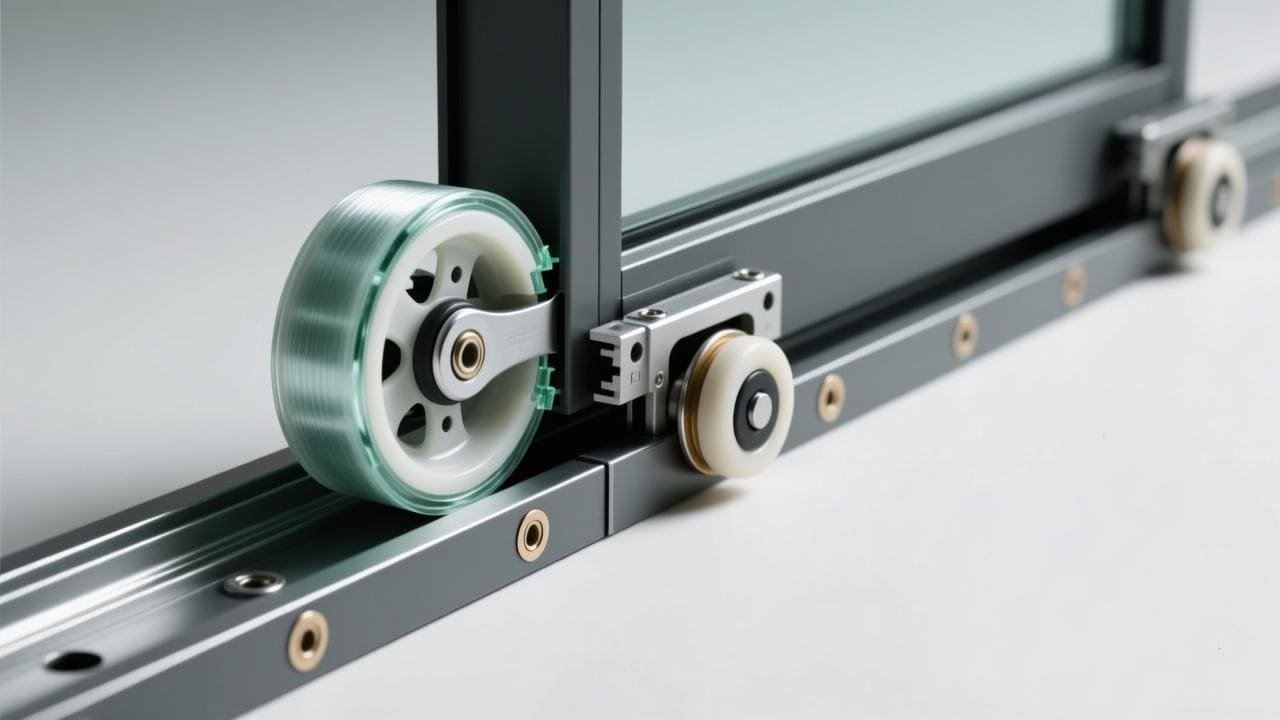
Getting these details right is what separates a good purchase from a great one. As someone who has been manufacturing these components for years, I’ve seen what works and what doesn’t. We need to look at the whole system, not just one part. Let’s break down each component to help you make the best choice.
How do I choose a sliding door track?
Choosing the wrong track can ruin a perfect door installation. It causes jamming, noise, and premature wear on the entire system. This frustrates your team and your end-users. Let’s make sure you select the right track every time.
The best track is designed to work perfectly with the pulley for smooth, quiet sliding. Pay close attention to the track’s material and thickness. Also, check for essential features like a quality stopper, a reliable positioning system, and height adjustment for a perfect installation.
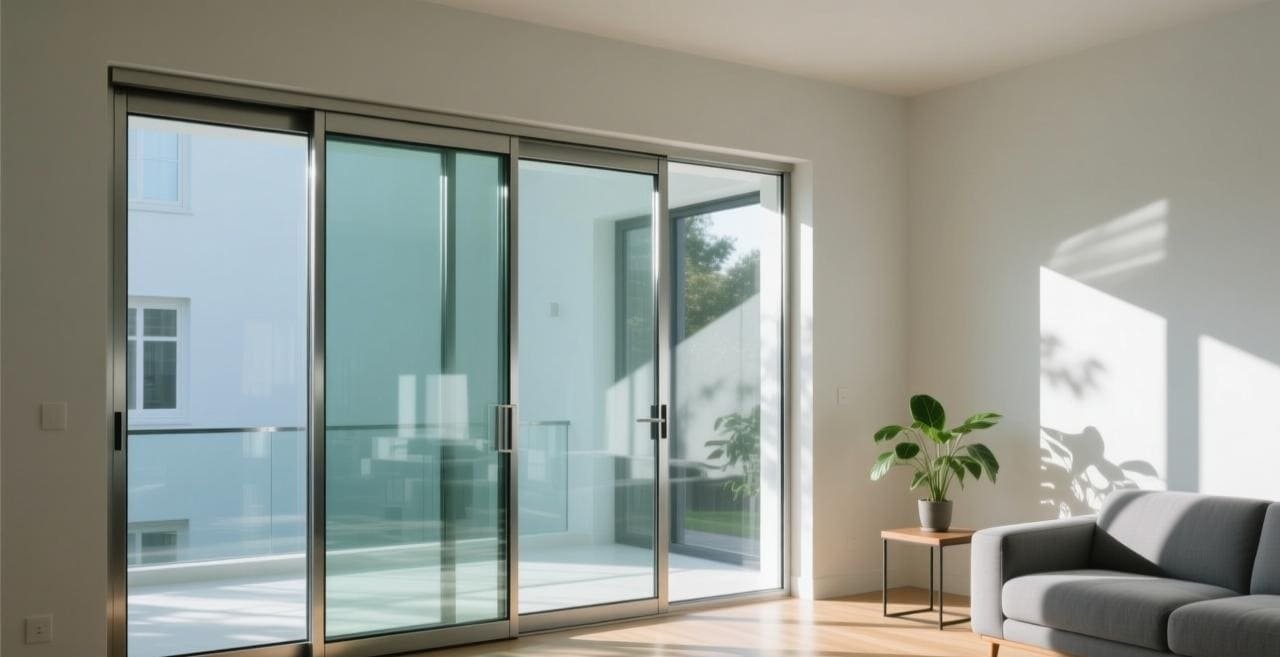
When I consult with buyers like Jacky, we always start with the door itself. The weight and size of the door panel are the most important factors. A heavy wooden or glass door needs a stronger, thicker track than a lightweight closet door. The material of the track, usually aluminum, must be high-grade to prevent bending or warping over time. A poorly made track will cause the rollers to wear out quickly, no matter how good they are. You should also inspect the extra features that create a premium experience. A good system has parts that work together.
Key Track Features to Inspect
| Feature | Importance | What to Look For |
|---|---|---|
| Material & Thickness1 | Durability & Capacity | High-grade aluminum that resists bending. Match the thickness to the door’s weight. |
| Stopper & Positioning | Safety & Functionality | A robust stopper prevents doors from slamming. A good positioning system holds it securely. |
| Height Adjustment | Ease of Installation | Allows for fine-tuning during setup to compensate for uneven floors or frames. |
| Glass Anti-Collision Belt2 | Protection & Longevity | This small detail protects glass edges and reduces noise, adding to the premium feel. |
How to measure sliding door rollers?
Incorrect roller measurements are a very common purchasing mistake. This leads to receiving parts that do not fit the track or the door. This wastes money and causes serious project delays. Here is a simple way to get it right.
To measure a sliding door roller, you need three main dimensions. Use a digital caliper to get the exact wheel diameter, wheel thickness, and the overall height of the roller assembly. These accurate measurements ensure a perfect fit for a new order or replacement.
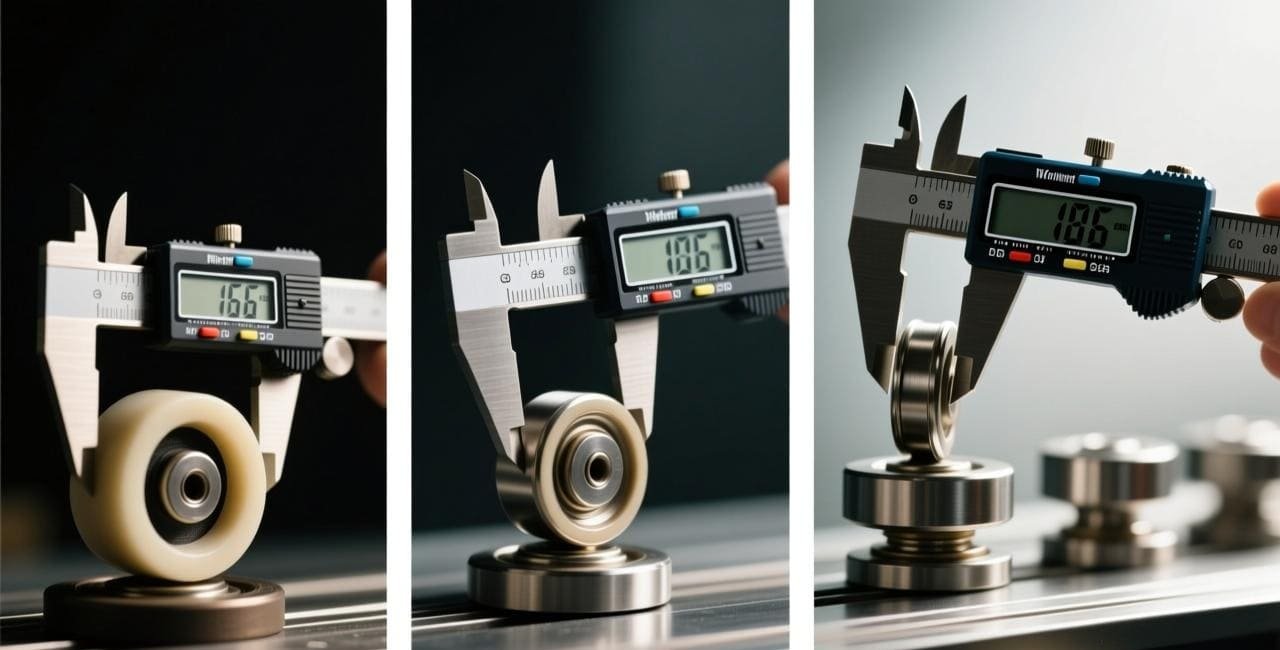
I can’t tell you how many times a customer has sent me a photo with a ruler next to a roller. It’s a start, but it’s not accurate enough for wholesale orders. A small mistake of one or two millimeters can make a part completely useless. That’s why I always tell my clients to invest in a good pair of digital calipers. They are not expensive and they save you from major headaches. When you measure, you need to be precise. The diameter affects how the wheel sits in the track. The thickness affects stability. The assembly height determines how the door hangs. Getting all three correct is essential.
The Three Critical Measurements
- Wheel Diameter3: Measure the distance across the widest part of the wheel. This measurement must match the profile of the track it will run in.
- Wheel Thickness: Measure the width of the wheel’s edge. If it’s too thin, the door will wobble. If it’s too thick, it won’t fit in the track at all.
- Assembly Height4: Measure from the top of the mounting bracket to the bottom of the wheel. This dimension is critical because it sets the gap between the bottom of the door and the floor.
How to know which rollers for a sliding glass door?
Glass doors are heavy and can be fragile. Using the wrong rollers is a serious risk. It can lead to a system failure that damages the glass or creates an unsafe situation. Let’s make sure we identify the right rollers for this specific job.
For sliding glass doors, you must choose rollers with a high weight capacity. Look for tandem rollers, which have two wheels per assembly, for better weight distribution. The wheels should be made from durable materials like glass fiber or reinforced nylon.
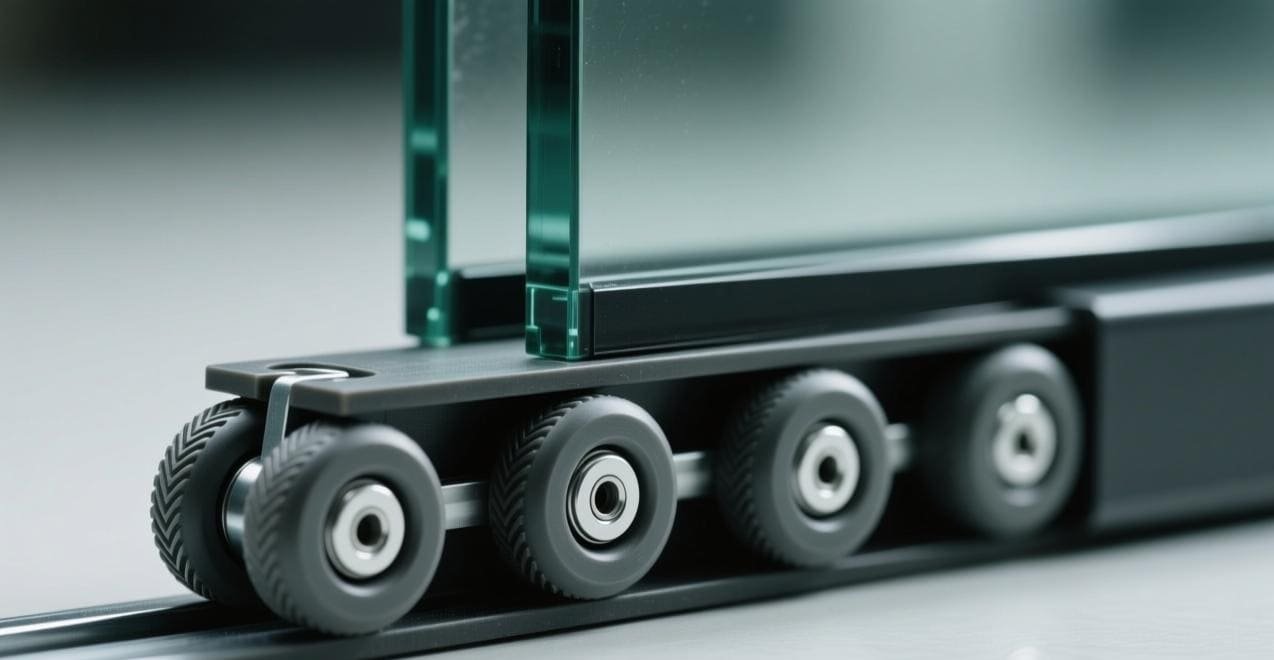
Glass doors are much heavier than wooden or composite doors of the same size. This weight puts a huge amount of stress on the rollers. A standard single-wheel roller is almost never enough. The weight will overwhelm it quickly, leading to failure. This is why tandem rollers are the standard for glass patio doors. They use two wheels in a single housing, which spreads the load across a wider area of the track. This not only increases safety but also makes the door feel much lighter and smoother to operate. When we manufacture rollers for glass doors at opensliding, we always use reinforced wheel materials and bearings rated for heavy loads.
Roller Types for Glass Doors
| Roller Type | Best For | Why It Works |
|---|---|---|
| Single Wheel | Not recommended for glass doors. | Lacks the weight capacity and stability needed for the safe operation of a heavy door. |
| Tandem (2 wheels)5 | Standard & heavy residential glass doors | Distributes weight evenly for smooth rolling and stability. This is the industry standard. |
| Quad (4 wheels)6 | Very large or commercial-grade glass doors | Offers maximum weight capacity and the smoothest glide for oversized, heavy installations. |
What’s the most common sliding door wheel?
With so many material options, it can be hard to know what is standard in the market. Ordering a niche product can lead to higher costs and supply chain issues later. Let’s look at the industry’s most common and reliable choice.
The most common sliding door wheels today are made from high-quality nylon or glass fiber. These materials provide the best balance of quiet operation, durability, and value. Cheap plastic is avoided in quality systems, and metal is too noisy for most residential uses.
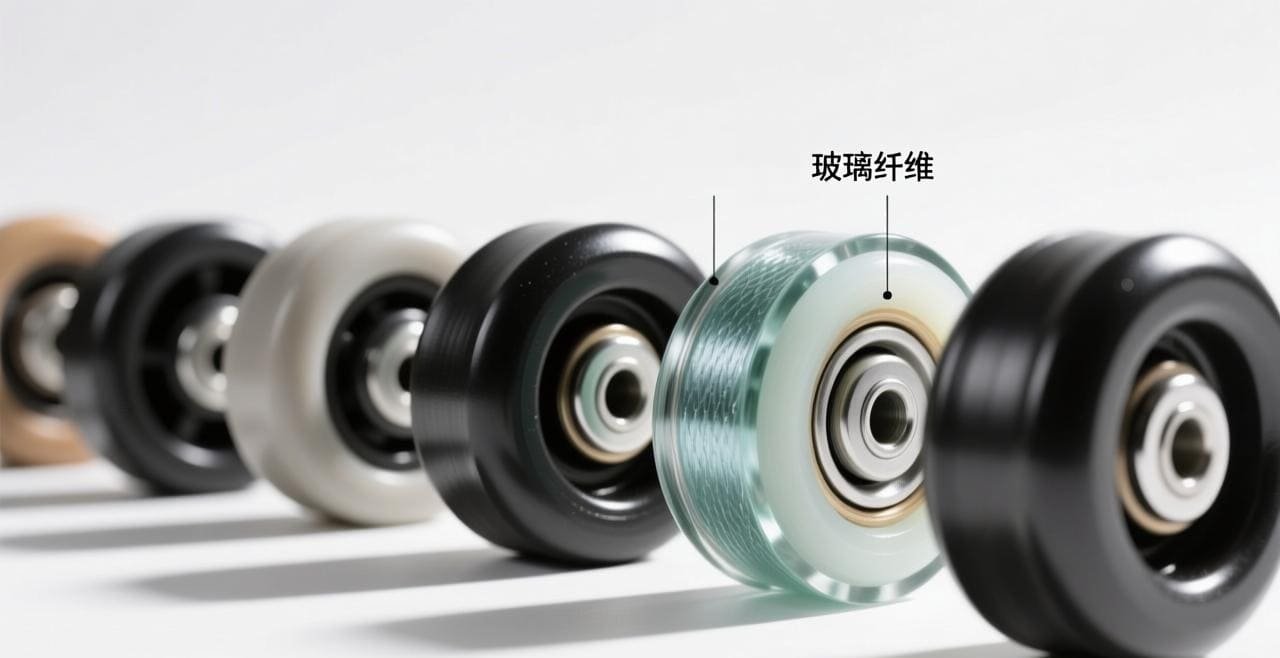
Years ago, metal wheels were common because they were strong. But they are incredibly loud and can wear down an aluminum track over time. Then came cheap plastic wheels. They are quiet at first, but they become brittle, crack, and get stuck very quickly. I always advise against them. The industry has now settled on high-performance polymers. Materials like reinforced nylon and glass fiber are the perfect solution. They are strong enough to carry heavy doors, they are naturally self-lubricating for a smooth glide, and they are extremely quiet. This combination of features is why they have become the standard for quality residential and light commercial sliding door systems around the world.
Wheel Material Comparison
| Wheel Material | Pros | Cons | Common Use Case |
|---|---|---|---|
| Basic Plastic | Very cheap. | Brittle, wears out fast, becomes noisy. | Low-end, lightweight furniture. Not for quality doors. |
| Metal (e.g., Steel)7 | Very strong, high weight capacity. | Loud, can damage aluminum tracks. | Heavy-duty industrial or specific barn door applications. |
| Nylon / Glass Fiber8 | Quiet, smooth, durable, wear-resistant. | Lower weight capacity than steel. | The industry standard for most residential sliding doors. |
Conclusion
Choosing the right pulleys and tracks comes down to material, measurement, and matching the system to the door’s weight. Get these details right for a successful installation every time.
Explore this link to understand how material choice impacts durability and performance in door tracks. ↩
Learn about the benefits of a glass anti-collision belt and how it enhances safety and longevity for your doors. ↩
Understanding wheel diameter is crucial for ensuring proper fit and function in door tracks, enhancing stability and performance. ↩
Assembly height is vital for maintaining the correct gap between the door and floor, preventing operational issues and ensuring smooth movement. ↩
Explore the advantages of Tandem rollers, which provide stability and smooth operation for heavy glass doors. ↩
Learn about Quad rollers, designed for maximum weight capacity and smooth gliding for oversized glass installations. ↩
Learn about the strength and potential drawbacks of Metal wheels, crucial for heavy-duty industrial applications. ↩
Explore the advantages of Nylon / Glass Fiber wheels, known for their durability and quiet operation, ideal for residential sliding doors. ↩

